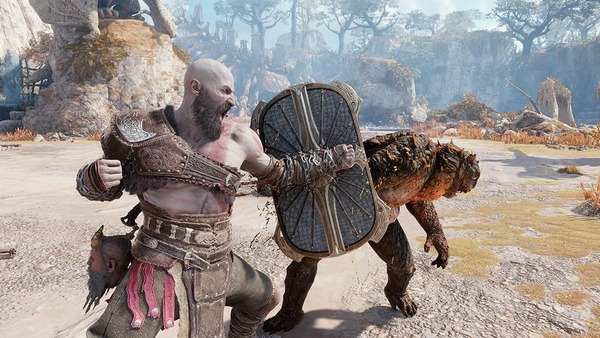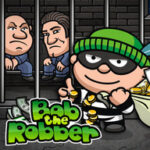Geometry Dash is more than just a game—it’s a high-speed, rhythm-based platforming experience that tests players’ reflexes, memory, and patience. Developed by RobTop Games, Geometry Dash first launched in 2013 and quickly became a cult favorite due to its unique blend of simple mechanics and intense difficulty. What started as a mobile title has grown into a multi-platform phenomenon, known for its electronic soundtrack, vibrant visuals, and a thriving custom level community.
Whether you're a seasoned jumper or a frustrated beginner, this comprehensive review dives into every aspect of Geometry Dash, from its core mechanics and progression to community content, updates, and competitive elements. Let’s explore why this deceptively simple game has become a timeless classic in the indie gaming world.
Origins and Rise of Geometry Dash: How It All Began
Geometry Dash was released on August 13, 2013, by Swedish developer Robert Topala (RobTop Games). Initially launched for iOS and Android, it later expanded to Steam, allowing PC users to enjoy the same pulse-pounding gameplay.
Inspired by games like The Impossible Game, Geometry Dash took the basic concept of rhythm-based obstacle jumping and layered it with intense visuals, precise mechanics, and a robust level editor. The initial success came from YouTube content creators showcasing impossible levels and near-inhuman gameplay, sparking a passionate fan base.
Core Gameplay Mechanics in Geometry Dash Explained
At its core, Geometry Dash is a one-touch game. Players control a cube (or other unlockable shapes) that automatically moves forward while tapping to jump. Sounds simple, but the game’s complexity arises from the perfectly timed jumps needed to avoid spikes, saws, and other deadly obstacles.
Each level is synced with energetic music tracks, where beats and rhythms often match platform placements. This creates a deeply immersive and challenging experience where timing is everything. From basic jumps to gravity-defying portals, the gameplay evolves quickly to demand fast reflexes and memorization.
Common Gameplay Elements:
- Jump pads and rings
- Gravity switches
- Speed portals
- Transformations (ship, ball, UFO, wave, robot)
- Checkpoints (in practice mode only)
Understanding the Difficulty Curve in Geometry Dash
Geometry Dash levels are categorized into difficulties: Easy, Normal, Hard, Harder, Insane, and Demon. Each category introduces new challenges, requiring tighter timing and more precise control.
Early levels like "Stereo Madness" and "Back on Track" help players get familiar with basic jumps and mechanics. However, once you reach levels like "Clubstep" or "Theory of Everything 2," the difficulty spikes significantly. Demon levels, especially Extreme Demons, are infamous for their punishing complexity.
Progressing through the game demands not only skill but also repetition. Players often attempt the same level hundreds (or even thousands) of times before mastering it.
The Music of Geometry Dash: Driving the Rhythm Forward
One of the defining features of Geometry Dash is its music. Partnering with artists like DJVI, F-777, Waterflame, and Xtrullor, the game’s soundtrack is an electronic masterpiece.
Each level’s music track directly influences gameplay, with beats aligning with jump points and hazards. This connection between audio and gameplay enhances immersion and helps players develop rhythm-based timing.
Popular Tracks in Geometry Dash:
- "Stereo Madness" – DJVI
- "Dry Out" – DJVI
- "Clutterfunk" – Waterflame
- "Electroman Adventures" – Waterflame
- "Geometrical Dominator" – Waterflame
These songs are now iconic in the gaming community and have inspired countless remixes, fan levels, and tributes.
Custom Levels and Level Editor: Geometry Dash’s Creative Heart
Geometry Dash's longevity is due in large part to its in-game level editor. Players can create and upload custom levels, complete with custom objects, triggers, camera controls, and syncable music from Newgrounds.
The community has produced millions of user-generated levels, ranging from beginner-friendly designs to nearly impossible Extreme Demon creations. With tools like object grouping, trigger-based events, and visual effects, some player-made levels rival official ones in both creativity and quality.
Tips for Creating Great Levels:
- Sync obstacles with music beats
- Use background triggers for visual effects
- Optimize gameplay flow and spacing
- Add checkpoints in practice mode for testing
- Decorate with layering and glow objects
Updates and New Versions: From 1.0 to 2.2 and Beyond
Since its release, Geometry Dash has gone through multiple updates, each adding significant features. Update 2.0 introduced new gameplay mechanics and visual elements, while 2.1 brought new icons, a new level (Fingerdash), and the gauntlets system.
The highly anticipated update 2.2 has been teased for years, promising camera controls, platformer mode, new triggers, and a new main level. Despite delays, developer RobTop has reassured fans of its eventual release.
Geometry Dash World and Geometry Dash Meltdown were also released as spin-offs, providing bite-sized experiences while showcasing future content.
Competitive Play and the Demon List Community
A major part of Geometry Dash’s community is the competitive scene. Players challenge themselves to beat verified “Demon” levels, particularly those ranked on the Demon List—a community-maintained ranking of the hardest levels ever created.
Completing top-tier levels like "Tartarus," "Slaughterhouse," or "Acheron" is considered a badge of honor. Players record completions, often with handcams, and post them on YouTube. The community thrives on friendly competition, grinding, and mutual support.
Key Competitive Concepts:
- Consistency runs
- Verification videos
- Handcam proofs
- FPS bypass discussions
- Leaderboard rankings
Geometry Dash's Impact on Gaming Culture
Though technically a small indie game, Geometry Dash has had a huge cultural impact. Its simplicity combined with brutal difficulty inspired a new wave of rhythm platformers and sparked creativity in younger audiences.
YouTube and Twitch play a crucial role in keeping the game alive. Content creators consistently post level showcases, speedruns, and level-building tutorials. The game also has an educational impact—many young developers learn game logic and design through the level editor.
Conclusion: Why Geometry Dash Remains a Timeless Challenge
Geometry Dash has stood the test of time through pure gameplay innovation and a passionate community. It’s a game where each jump, each beat, and each level tells a story of perseverance. Whether you're chasing your first Hard Demon completion or crafting your own masterpiece in the editor, Geometry Dash rewards dedication, creativity, and rhythm.
As we await the next big update, the current world of Geometry Dash continues to pulse with life, excitement, and endless cubes jumping to the beat. Dive in and discover why this indie gem still rocks the rhythm-platforming world a decade later.































